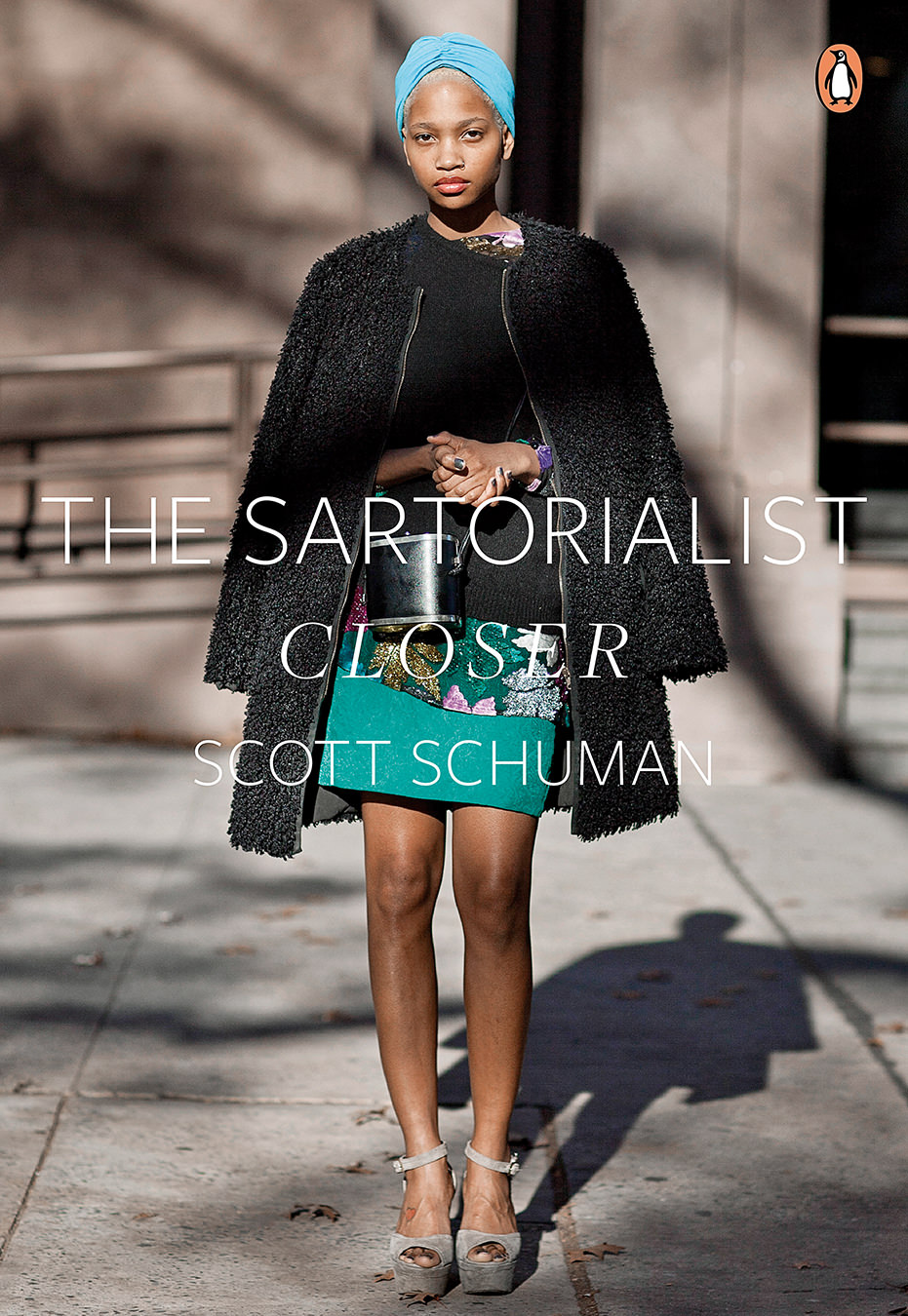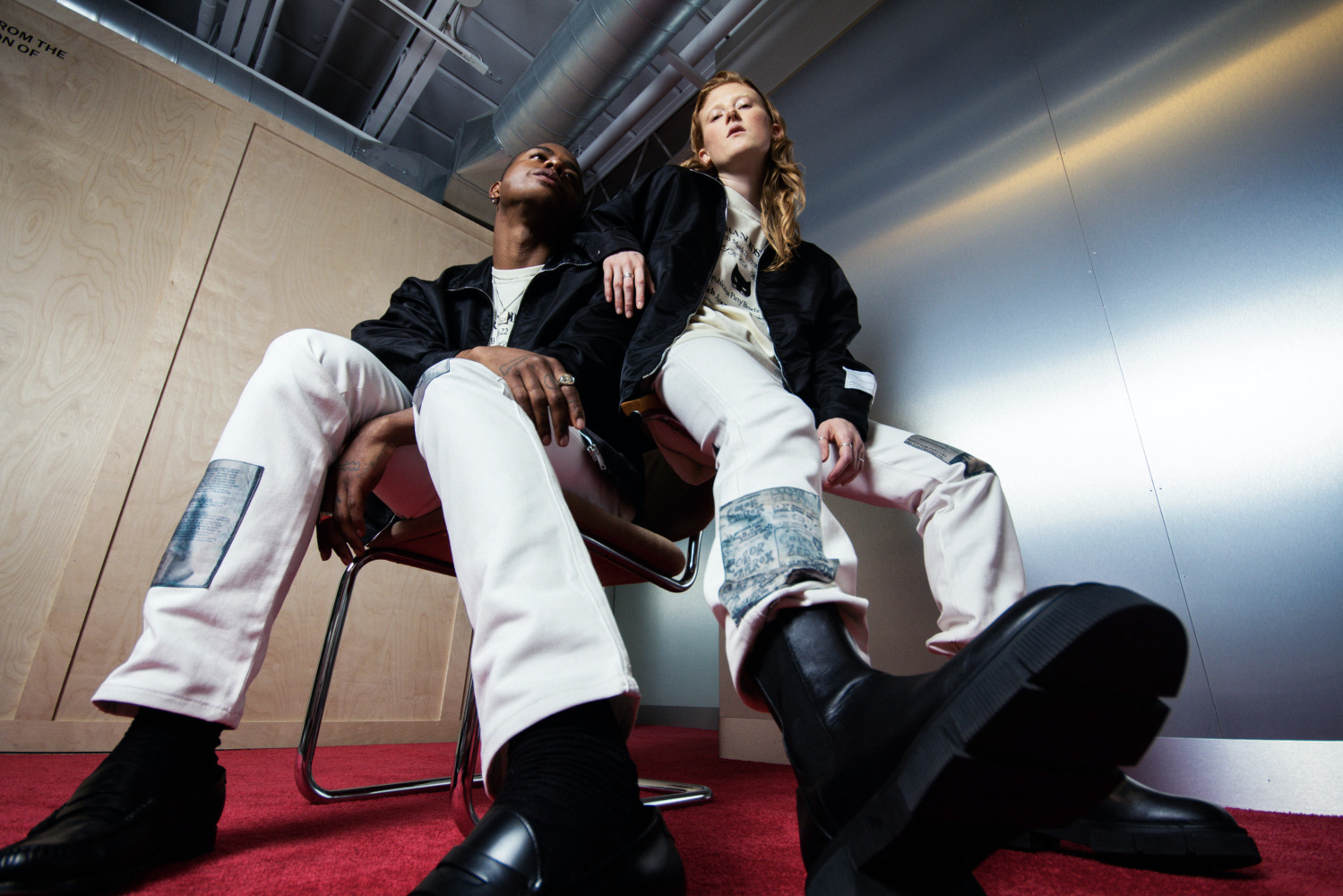
Joey Gollish, Mr. Saturday, and the General Theory of Coolness
How streetwear deals with its history, influence, and effects on the work of the individual.
In the saturated streetwear market, HXOUSE’s own Joey Gollish and his signature label, Mr. Saturday, have found sustainable success. It’s difficult to comprehend how Gollish’s brand has thrived where so many have failed before him, but in truth, the reason is simple: 26-year-old Gollish understands the theory of coolness.

Joey Gollish
What is Cool, Anyway?
For decades, when the exceptionally fickle realm of streetwear has launched the question “What is cool?” the rest of the fashion world has thrown up its hands and begrudgingly admitted, “We don’t know.” It’s not that designers and consumers fail to understand the vague tenets of a successful label, it’s that those tenets of coolness have been shrouded in ambiguity.
As Stussy’s David Sinatra and Vetements’ Guram Gvasalia would attest, the notion of coolness is particularly transient in the streetwear community. The distinction between brands that move the cultural needle and those relegated to the fringes of consumer interest is never static, but it always relies on the same enigmatic definition of coolness.
Of course, it’s paramount for aspiring labels to understand the core tenets of streetwear’s cultural success and create, in some form, an overarching theory to help guide their designs. Otherwise, without a broader understanding of what “coolness” historically means to streetwear’s identity, establishing a sustainable brand is virtually impossible. It’d be like trying to hop aboard a train car moving at breakneck speeds; the moment the label finds its footing, the train makes a turn, the fickle tastes of streetwear’s most impassioned consumers change, and the brand gets left behind.
This obsession with projecting the cultural success of streetwear labels led Lalin Anik, Johnny Miles, and Ryan Hauser of the University of Virginia’s Darden School of Business to publish a paper titled “A General Theory of Coolness,” in which they attempt to draw a standardized answer to the age-old question “What is cool?” Three years later, Anik teamed up with two other peers—Stephen Maiden and Addison Corriher—to write an associated paper titled “A Supreme Case of Coolness?” where Supreme’s longstanding reign atop the world of streetwear is mapped out in great detail.
Naturally, between the two papers, there are several contradictions because, as we know, coolness is complicated. But Anik concludes that streetwear’s most prestigious labels achieve sustainable success through four distinct traits: association, attitude, autonomy, and authenticity.
Most new labels base their creative strategies on one or two traits, yet only a few—the Supremes, the Off-Whites, the Kiths of the world—manage to genuinely achieve all four.
Gollish is hoping to enter Mr. Saturday into the pantheon of streetwear labels that meet these credentials, with his own take on Anik’s creed of cool.
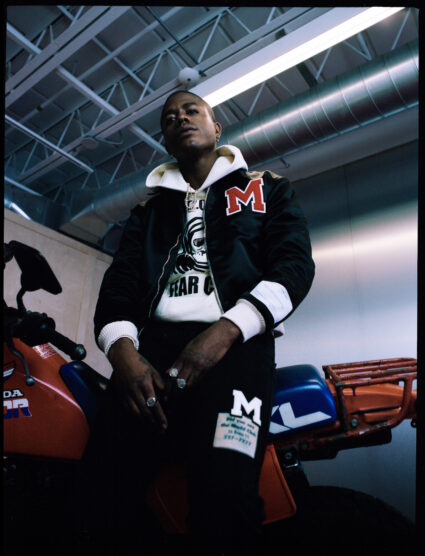
The Birth of Cool
In the general theory of coolness, association is not essential, but for Gollish, his association with HXOUSE, a non-profit incubator for young creative entrepreneurs based in Toronto, has proven invaluable. The brainchild of three-time Grammy winner the Weeknd alongside creative director La Mar Taylor as well as Ahmed Ismail, HXOUSE has offered Gollish not only room to experiment but also an education in the fashion archives and cultural history that have become fundamental to Mr. Saturday’s collections.
HXOUSE’s roster of guest speakers includes recently appointed Givenchy creative director Matthew Williams, contemporary artist Daniel Arsham, and Errolson Hugh of Acronym, all of whom happily held court for Gollish.
“Errolson carved his own path,” says Gollish, who is not shy about his influence and inspiration. “He doesn’t do the whole fashion week thing. He only sells really specific boutiques on his own schedule. Hearing from somebody who’s done that on their own and made a living off of it was so inspiring.
“Obviously, [Matthew Williams’] resumé is one of the crazier ones out there, going from costume designing for Lady Gaga and Kanye West to starting Alyx and then becoming the creative director of Givenchy. But beyond just hearing from him, from a mentorship perspective, he brought his whole team with him [to HXOUSE], including his suppliers who consult with him on designs and new sustainable technical fabrics. He opened up the playbook of his process in a way I’d never seen before.”
HXOUSE’s intention isn’t to monopolize the creativity of its students—quite the opposite. By bringing in Hugh and Williams, HXOUSE has helped instill in Gollish the artistic autonomy that defines fashion’s most influential figures. But such unapologetic individualism hasn’t stopped Gollish from admiring the work of designers from decades past.
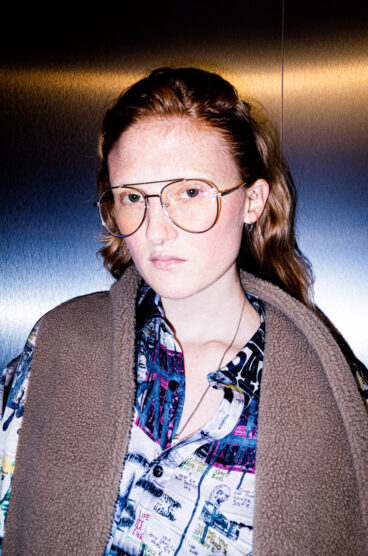
A Community of Cool
In each collection, Gollish seeks to reinvigorate the charm of eras long since past, paeaning back to the cultural heyday of the ’70s and ’80s. Somewhere between scholarly and creative, Gollish’s fascination with the historical foundations of culture have brought him to the second and third tenets of Anik’s general theory of coolness: attitude and autonomy.
Mr. Saturday often celebrates the artists who were once relegated to the fringes of society. In a recent exhibition, Gollish’s label dropped a collection inspired by TriBeCa’s infamous Mudd Club, a once-formative hot spot for counterculture and the LGBTQ community frequented by Andy Warhol, Lou Reed, Allen Ginsberg, and Jean-Michel Basquiat.
“A lot of the work I do is about contextualizing the way that we feel today by relating to people who have gone through something similar in the past,” says Gollish. “Look at the Mudd Club; that’s a group of artists who we all idolize today before they were established, and they were doing it. They were doing what they were doing not to become idols and to become rich because, at the time, that wasn’t even necessarily a possibility. They were just doing it to create that sense of community … I think that in general, nightclubs, which today have been the main focus of my work, are safe havens for marginalized communities. They’re the epicentre of what matters in culture at a specific time.”
Each collection is meticulously designed, every cultural reference curated to reflect Gollish’s melancholic appreciation for the past. But behind his inspirations lies a clear sense of autonomy and a complementary attitude that make Mr. Saturday one of the most distinctive streetwear brands in the world. According to Anik, a defining pillar of coolness is a brand’s ability to challenge social norms and conventionality. He asserts that the cultural relevancy of a streetwear label relies on a “rebellion against the mundane. [A brand’s] credibility comes only from confidence.”
“When you’re looking at the streetwear phenomenon going on, autonomy is the basis of it,” says Gollish. “The general mentality is, ‘We’re going to make whatever we want, whenever we want to make it, and whoever wants to be apart of it can be.’ I feel grateful that I have the kind of autonomy that allows me to enjoy my work. I never feel pigeonholed into one specific direction.”
In Mr. Saturday’s spring/summer 2021 collection, Gollish opted to dive even deeper into the label’s critical cultural analysis. He pays tribute to Keith Haring’s 26th birthday party at the exquisite Paradise Garage and Stephen Sprouse’s first major fashion show staged at the East Village club the Ritz, but perhaps the collection’s most profound allusion comes in his reference to the death of Michael Stewart.
In 1983, Stewart, a 25-year-old Black artist and model, became the face of yet another tragic and senseless killing by the NYPD. Six officers faced trial in 1985, and, in a pattern that has become all too familiar, six officers were acquitted. In Gollish’s latest collection, the memory of Michael Stewart lives on through archives of old party posters paired with the ironic use of repurposed vintage nylon American flags.
“Leading up to presenting the collection, I felt like it was an opportunity to use that microphone to speak to … our current generation about what’s happening right now and highlight that this isn’t new,” Gollish says. “We wanted to express that groups of creatives like us have been fighting for the same things for so long. And although things feel bleaker than ever, you can’t take your foot off the gas. Fighting for human rights is just as urgent as it was in 1984. It all goes back to really telling the story; you can’t talk about New York at that time without acknowledging police violence.”
This notion of intergenerational artistic communities is precisely what Gollish’s latest collections seek to unearth. But what about Anik’s final core principle? According to his research, sustaining a transcendent streetwear label “means providing positive products, experiences, and messaging, complementary to the brand’s core values.” Mr. Saturday is built upon the foundation of honouring counterculture and, in turn, the artists who perpetuate it, so supporting those very artists is therefore paramount to the brand’s authenticity.
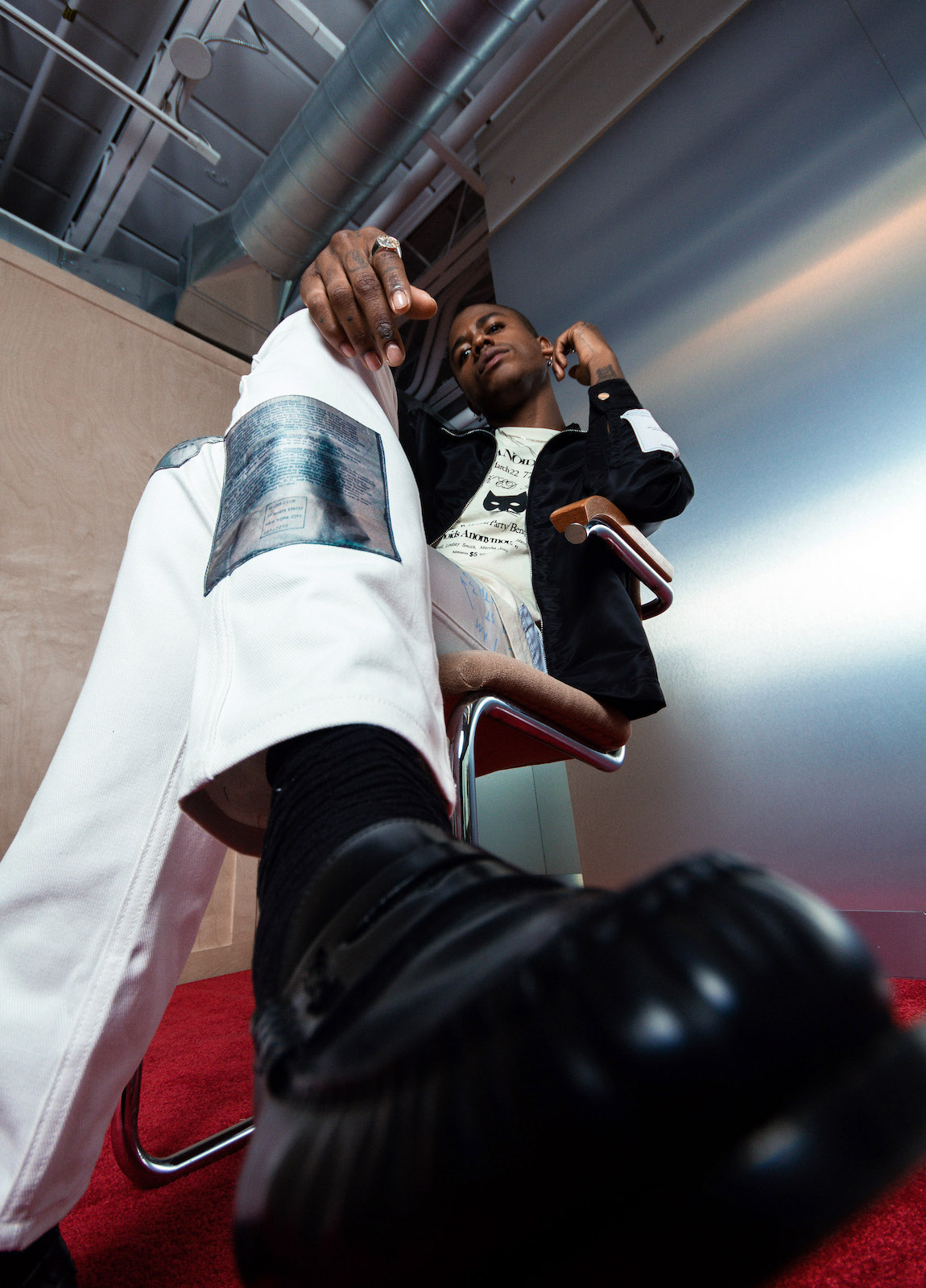
When the World Stops
Earlier this year, Gollish proved that Mr. Saturday’s celebration of creators goes beyond its designs, dropping a cozy capsule collection that referenced the iconic Paris’ Le Palace—a former Faubourg Montmartre nightclub that hosted nearly every important artist during the ’70s—to benefit creators impacted by COVID-19.
“Before COVID started, we had planned a world tour of pop-ups. It was meant to be a continuation of what we did in Paris in January,” Gollish says. “Obviously, that didn’t happen, and we had a bunch of inventory that we had made for it. We had to retool what we were going to do with that, and after talking to La Mar [Taylor] we realized that by working with HXOUSE and the Toronto Arts Council, who are giving $1,000 grants to artists whose income has been affected by COVID-19, we could make a real difference.”
By the end of the initiative, Mr. Saturday had helped raise nearly $80,000 for fellow artists.
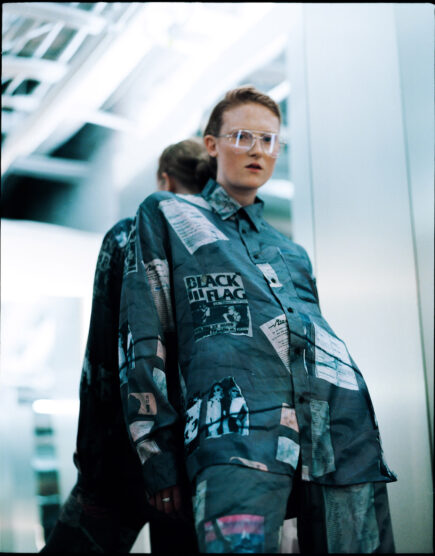
The Real Deal
To Gollish, authenticity is paramount to creative success. The very identity of Mr. Saturday is built upon its founder’s veritable fascination with cultural history, a distinctly individualized creative vision, and an unwavering belief in the power of community.
“If you’re not being authentic, then what’s the point? If a brand isn’t synonymous with authenticity then it isn’t even fashion to me, it’s just clothing and consumerism at a base level,” Gollish says. “Brands that I identify with all come from an individual perspective that I can empathize with. It comes down to that genuine perspective and someone’s ability to express something meaningful.”
As for the streetwear market at large, the Toronto designer has quickly come to understand that not all labels follow the same principled philosophy in the battle for cultural relevancy.
“I think the growth of menswear and streetwear is really interesting right now because anyone could conceivably start a ‘streetwear brand’ and at least have a small group of people around the world who want to participate in it,” Gollish notes. “That’s cool on a grassroots level because it’s just another form of exploring community. But I think that people are becoming more educated, and, fortunately, derivative brands are diminishing. One of the benefits of this past year is that people understand the importance of their own education. That doesn’t mean new brands can’t find a space; it just means the inauthentic ones will fade out.”
Association, attitude, autonomy, and authenticity: the four tenets of coolness solidified in the creative approach of one 26-year-old designer.
Of course, 10 years from now, we may very well look back on Anik’s general theory of coolness and scoff at its archaic critique of the fashion world because, as we know, our notions of coolness are never timeless. But armed with the support of HXOUSE, a scholarly veneration for those who helped shape the industry, and a unique perception of what matters today, Gollish is well equipped to become as artistically timeless as the artists he so reveres.
Photography by @stephverschuren. Fashion images are from Mr. Saturday’s “Stranger than Paradise” campaign
_______
Never miss a story. Sign up for NUVO’s weekly newsletter here.




